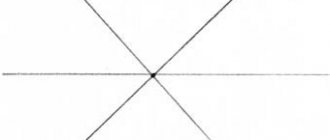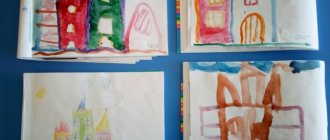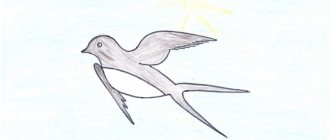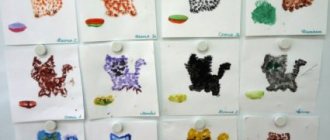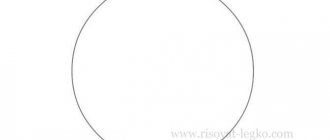GCD move:
1.Creating a problem situation:
Children go into the room.
Educator: Guys, I have important news for you. A video letter arrived at our kindergarten. Let's read it.
The children sit down . View the presentation “Letter from Dunno”
The teacher reads the letter: “Hello guys! Dunno writes to you. I like traveling very much. Today I flew in a hot air balloon and saw your small Motherland. I did not have the opportunity to land, but I saw that the houses in your village are different from the buildings in the Flower City . I really want to get acquainted with rural houses . Can you help me? I'm sure you'll come up with something. Thanks in advance. Dunno."
Educator: Guys, who is the letter from? (Children's answers)
-What is Dunno asking for? (Children's answers)
-How can we introduce Dunno to rural houses ? ( Draw houses and send to Dunno)
.
Educator: You already know that every person has a homeland. “Motherland” mean to you?
?
(Children's answers)
Educator: The place where we were born is the Motherland. We love our home, we feel very good among friends.
(“Everywhere is good, but at home it’s better ”
,
“Everyone has his own side”
,
“There is no more beautiful country in the world - our Motherland”
)
Educator: Each of us has our own home, which we love, in which our dearest and most beloved people live. We will find out which house is yours in a ball game.
Playing with the ball on the court.
Physical exercise: “Hurry up and catch the ball, and what do you call your house?”
(answer options: big, beautiful, cozy, bright, beloved, etc.)
Educator: Look, guys, how many beautiful words we came up with about home!
Examining the layout of the house.
— There are different houses and they are called differently : wooden, brick. How do you understand these names? (Wooden houses are houses built from wood , brick houses are made from bricks)
Teacher for 6-7 year old children: -Houses can also be one-story and multi-story. How do you understand these names: one-story house, multi-story house? (A one-story house consists of one floor, a multi-story house means it consists of two or more floors)
-Name the multi-storey buildings in our village . (Kindergarten, dormitory building)
Educator: And now it’s time to draw pictures for Dunno, he’s waiting for your help. Before we start drawing , let's stretch our fingers.
Finger gymnastics “HOME”
.
I want to build a house , (Hands above your head in a “house.”)
So that there is a window in it, (Hands in front of the eyes “window”)
So that the house has a door , (Palms turned towards you, closed.)
Nearby so that the pine tree grows (Fingers are spread out, hands are pulled up.)
The dog guarded the gate. (One hand is “dog.”)
It was sunny, (Cross your hands, fingers spread.)
It was raining ("Shaking" movements)
Educator: Guys, I ask everyone to choose a place to work: an easel at the table.
Children sit at tables and stand at easels.
Teacher for children 5-6 years old: (independent activity)
— Tell me, what’s on your tables? (album sheets, wax crayons and colored pencils)
.
What will you draw ? (Children's answers)
- You can start drawing .
-Guys, let's remember how to draw with wax crayons and pencils:
-When painting a drawing, you must not go beyond the contour of the drawn image .
-When painting, strokes should be applied in one direction: from top to bottom, from left to right, or obliquely.
-It is advisable to paint over the drawing without gaps.
-When painting, you need to press evenly on the pencil. If you need it brighter, press hard, if you want it lighter, press it lightly.
Program content.Introduce children to the history of their hometown. Show children the features of drawing with charcoal pencils. Learn to draw the contours of multi-story and one-story buildings with a charcoal pencil. Consolidate knowledge about the main parts of a building (wall, roof, window, door, balcony). Learn to create a cityscape.
Demonstration material.
Paintings depicting wooden and white-stone Moscow, photographs of the modern Kremlin and Moscow streets (for Moscow residents).
Handout.
Watercolor paper, charcoal pencils, cotton swabs.
Progress of the lesson
Tell the children about the founding of the city of Moscow (or the city in which the children live):
“The founding of Moscow is associated with the Russian prince Yuri Dolgoruky. Previously, this was an ordinary village of Kuchkovo, because the boyar Stepan Kuchka lived in it. There, on a high hill, Prince Yuri Dolgoruky met with another prince to conclude an alliance. Yuri Dolgoruky liked the place on the banks of the Moscow River so much that he decided to annex these lands to his own and build a small wooden fortress. By order of the prince, the village of Kuchkovo began to be called Moscow (after the name of the river).
Many, many years passed, and a white-stone Kremlin was erected on the site of the wooden fortress (show pictures of the white-stone Kremlin). And after some time, the Kremlin was built from red brick (show the photo).
Since then, Moscow has changed a lot: there are high-rise buildings, cars, buses, trams drive along the streets (show photos of modern Moscow streets). But once there was a small wooden fortress here, and two dozen houses stood on the river bank.”
Ask the children if they have seen the Moscow Kremlin.
– Today we will draw a modern street: with high and low houses. And we will draw with charcoal.
Introduce children to the features of charcoal pencils: they are very fragile, so you should draw with them without strong pressure, easily. To prevent the drawing from being smeared, it is advisable to place a napkin under the fist of your right hand.
Suggest starting with the road - a straight horizontal line at the bottom of the sheet. Arrange houses on it in the form of wide and narrow, high and low rectangles. There is no need to paint the house; you can slightly darken the windows.
At the end of the lesson, spray the children's work with hairspray.
Look at the streets they depict with your children and highlight the most successful moments.
Ask how the children enjoyed drawing with charcoal pencils.
Summary of a drawing lesson in the senior group “Builders build houses”
Olga Gorokhova
Summary of a drawing lesson in the senior group “Builders build houses”
TOPIC: "BUILDERS ARE BUILDING HOUSES."
MATERIALS AND EQUIPMENT:
DEMONSTRATION MATERIAL: drawings depicting phased construction, drawing diagrams of a crane, a letter, a house model, human toys, a pointer. HANDOUT: 2 sheets of toned paper (the horizon is located in a horizontal and vertical position of the sheet) - for each child, colored wax crayons, simple pencils.
2. WORK METHODS. explanation.
-Now let’s play with you: I want to build a house: So that there is a window in it, So that the house has a door, So that a pine tree grows in the garden, So that there is a fence around it, So that a dog guards the gate. Let the sun shine. The rain was dripping from the sky and the tulip was blooming in the garden!
5. INDEPENDENT ACTIVITY OF CHILDREN. Individual assistance from the teacher to children who cannot cope with the task. Reminds you not to forget to draw people, etc.
DIAGRAM OF STAGED DRAWING OF A LIFTING CRANE.
READY WORKS FOR CHILDREN.
"Dangerous items at home." Summary of an open lesson on life safety in the senior group Goal: To expand children's understanding of objects that can serve as sources of danger in the house. Objectives: Give presentations.
Summary of a comprehensive lesson in mathematics and drawing for children of the senior group “Sea Voyage” Program content: To consolidate children’s knowledge about the composition of the number 9; ability to name numbers in direct and ordinal counting; measure objects conventionally.
Abstract of the NOD OO "Artistic and Aesthetic Development" in the middle group. Topic: Application “Builders. We are building a house" Synopsis of the NOD OO "Artistic and Aesthetic Development" in the middle group. Topic: Application “Builders. We are building a house." Kushigina's teacher. Summary of GCD for design in the senior group “Builders” Summary of GCD for design in the senior group “Builders” Purpose: to teach children to creatively apply previously acquired constructive skills. Summary of a design lesson in the senior group “Houses on our street” Summary of a design lesson in the senior group. Construction from building materials TOPIC: Houses on our street. The lesson is being held.
Summary of a lesson on life safety in the senior group “Home Alone” Progress of the lesson: Educator: Guess the fairy tale for which the illustration was made. Children: “Cat, rooster, fox” Educator: What is recklessness (what.
Summary of a drawing lesson in the first group of toddlers “Trolley for a hedgehog” Summary of a drawing lesson in the first group of a toddler Topic: “Trolley for a hedgehog” Purpose: Learn to depict rounded shapes, name them.
Summary of a lesson on drawing with palms in the senior group Directly educational area “Artistic creativity. Drawing Integration of OO: “Cognition”, “Communication”, “Music”, “Reading”.
Source
